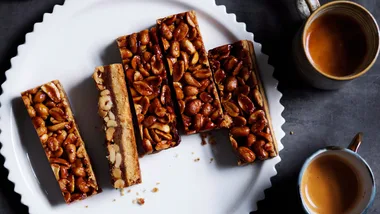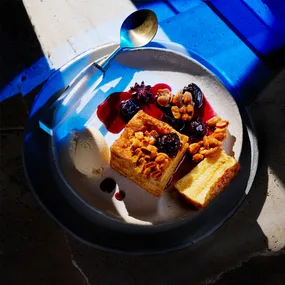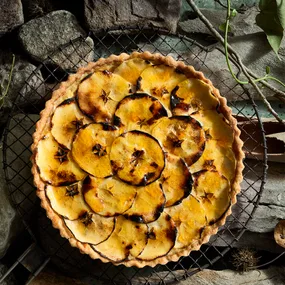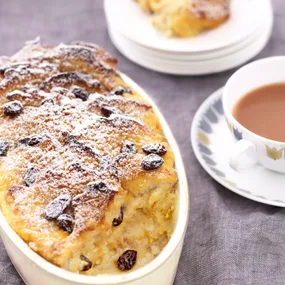Croissants are made with a simple yeast dough and, of course, lots of butter. And while they take about 16 hours to make, most of this time is spent allowing the dough to rest. The rolling, folding and resting technique is similar to the one used for making puff pastry, although croissants have fewer layers.
The dough is made by activating yeast with a little sugar and some milk (sometimes water is used), then adding flour to create a soft, but not too sticky, dough, which is best made in an electric mixer.
The dough is then rested in the first of several resting stages. Resting the dough serves two purposes: first, it relaxes the gluten, which will give your croissants a good texture, and second, the long, cold fermentation enhances the pastry’s yeasty flavour.
Whether to use French or Australian butter to make a great croissant is the subject of much debate. In our testing, we found that Australian butter can produce a crisper, flakier croissant with better flavour, but that it produces inconsistent results from batch to batch. Investing in expensive French butter, however, we found to be unnecessary. Michael Klausen of Sydney’s Brasserie Bread says the bakery uses Belgian butter specifically made for use in pastry, but for home use he recommends Danish Lurpak butter, which he describes as more consistent than Australian butter. “A drier butter with a good butterfat percentage is what you’re after,” he says.
Your butter should be cool from the fridge and the same temperature as the dough, says Myriam Cordellier of Balmain’s Victoire bakery. Klausen agrees: “You need to find that temperature when your butter and dough have the same texture,” he says. “It makes the rolling process easier – if it’s hard, cold butter it will flake; if you have warm butter it will smear and make the dough split.”
When the butter and the dough are both cool and of rolling consistency, envelop the butter in the dough and roll it into a rectangle, then fold the dough like a letter to create three layers. Turn the pastry 90 degrees, wrap it in plastic wrap and refrigerate for an hour to rest, then repeat three times to create buttery layers. It’s important to work quickly when rolling so the butter doesn’t soften too much, and to brush any excess flour away with a pastry brush to prevent the dough from becoming tough.
When the dough has rested for the last time overnight, place it in the freezer for 20 minutes so it’s easier to work with, then roll it out and cut it into triangles. You can do this by halving squares diagonally, or by cutting the dough freehand. Any pastry you’re not working with should be kept refrigerated; otherwise, the dough will become soft and difficult to manage. Stretch the edges of each triangle slightly, then roll it into a taut roll with three or four layers. Finish by pressing the tip of the triangle underneath the roll to secure it – this will stop it from lifting during baking – then shape the croissant into a crescent.
The best way to prove your croissants is to place them on an oven tray lined with baking paper, place a couple of glasses on the tray, enclose the lot in a plastic bag and leave the croissants in a draught-free (but not hot) place so they will rise but the butter won’t melt.
You can brush the croissants with eggwash for extra colour, but the butter content is enough to make them brown nicely without help. Remove the bags and glasses and place the croissants into a hot oven with a spray of water for steam, which will help develop a nice crust.
Croissants don’t keep well and are best eaten on the day they’re made.
Ingredients
Method
Main
Note You’ll need to begin this recipe a day ahead. We recommend using Danish or Belgian butter for best results.
Notes
 William Meppem
William Meppem









